Nicknamed “The Grand Canyon State”, it’s no surprise that Arizona is filled with national parks, forests and wilderness preserves—many of which are home to historic sites that date back to well before the area's statehood. A hike down to ancient ruins provides a glimpse into civilizations of centuries past (and the contemporary people who continue their legacy), and a ramble through a historic military fort brings to life the drama of an uncertain time in the American Southwest.
With its unique, rich and varied history, a visit to Arizona offers a chance to be immersed in a different time—and there is no better way to begin exploring than to step outdoors. To start, read about these eight destinations filled with Arizona history.
1. Tuzigoot National Monument

Perched high above the Verde Valley sit the striking ruins of a 110-room pueblo built by the ancestral Sinagua people around 1000 A.D. Constructed atop a limestone ridge more than 100 feet above the Verde River’s flood plain, the pueblo offered its original inhabitants not only impressive views of the surroundings, but also provided a reliable year-round water source that would have made cultivating crops more feasible in a less forgiving environment. However, the climate began to shift around 1300 A.D. and the Sinagua people migrated away from the pueblo, leaving behind countless artifacts that would later be unearthed during a series of archaeological excavations in the 20th century. Centuries later, the view at Tuzigoot National Monument remains breathtaking with dry hills transforming into the lush greenery of the valley below thanks in part to the water that still flows beneath it.
Housed in a New Deal-era building, a trip to Tuzigoot is best started at its Visitor Center and Museum. The architecture is a contemporary version of traditional Sinagua construction and its collections highlight the breadth of human history in the Verde Valley and the Sinagua people’s contribution to a vast trading community, stretching from the Colorado Plateau to the Pacific Coast and Central America. For a gentle hike to see hilltop views and scenery, opt for the one-third-mile loop that follows the pueblo. A half-mile round trip trail will transport visitors to the ecological wonder that is the Tavasci Marsh—as the largest freshwater marsh in the state, it contains an incredible biodiversity—including more than 245 species of birds.
2. Walnut Canyon National Monument

Over the course of 6 million years, the forces of nature bore down to form the geological wonder that is Walnut Canyon. From the inner gorge’s buff sandstone to the limestone ledges of the upper canyon that reveal ancient marine fossils, this sturdy canyon has drawn the curiosity of people since time immemorial. Artifacts show that people traveled through the area during the Archaic period between 6,500 B.C. to 700-800 A.D., predating even the ancestral Sinagua people. Today, the Walnut Canyon National Monument remains more than just a natural wonder; it’s an important ancestral home with significant historical ties to thirteen present-day tribes. The area first became a national monument in 1915 after residents advocated for protection of the historic site—the area had become a hot spot in the 1880s for “pot hunters” keen on extracting archaeological wares from the ruins by any means.
While it’s been more than 700 years since the canyon has been home to its original inhabitants, visitors simply need to step out onto the Island Trail to picture what life may have been like for the ancestral Sinagua. The one-mile round trip trail leads down deep into the canyon where visitors can walk alongside and into the 25 cliff dwelling rooms. For a low-impact option, the Rim Trail offers a paved walk with some of the best views into the canyon. Thanks to a nearby freshwater source and minimal human development, coyotes, mule deer, javelinas, and numerous species of birds can be spotted here.
3. Wupatki National Monument
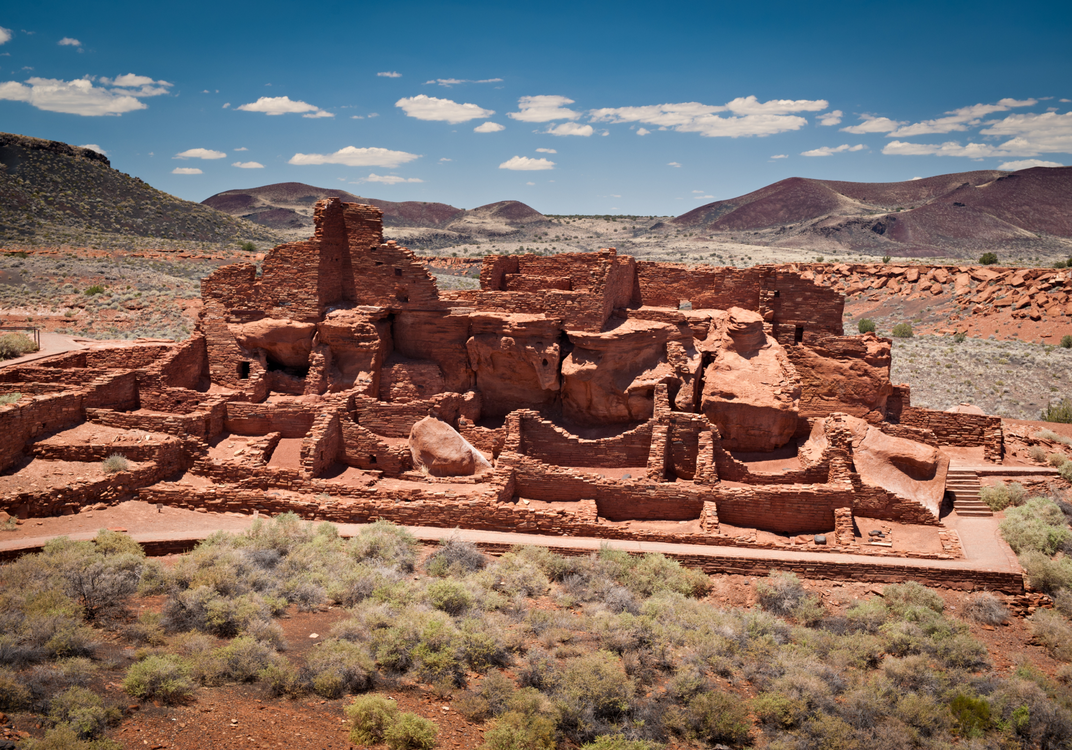
Situated between the Painted Desert and the Ponderosa Highlands of Northern Arizona, the Wupatki National Monument is an unlikely landscape for a once thriving agricultural and trading community. Here, visitors can take one of the park’s four trails to explore several different pueblos, including the Wupatki Pueblo, Wukoki Pueblo, Lomaki and Box Canyon Pueblos, Citadel and Nalakihu Pueblo. The pueblos in Wupatki appear to follow a pattern with smaller family structures surrounding a larger community pueblo with many rooms, as is the case with both the Wupatki and Citadel pueblos. Among the most impressive structures is the Wupatki Pueblo, the largest free-standing pueblo in Northern Arizona containing more than 100 rooms, a ball court and a natural blow hole located directly behind the Wupatki Visitor Center. While the site is no longer occupied physically, the Hopi people believe those who lived and died here remain as spiritual guardians, and contemporary tribes continue to return to enrich their understanding of their ancestral cultures and history.
For the most spectacular views, visitors can hike to the Wukoki Puebo where the reinforced three-story pueblo offers sweeping views of the San Francisco Peaks in Flagstaff. For the truly adventurous, off-trail ranger-led hikes to see petroglyphs and different pueblo structures are available between November and March, ranging from moderate to strenuous. The Crack-in-Rock overnight hike is a two-day backpacking trip to an isolated portion of the Monument that explores rock art and pueblo architecture—signups are only available by lottery for two trips, one in April and the second in October. For a more flexible overnight stay, camping is available at the nearby Coconino National Forest.
4. Tumacácori National Historical Park
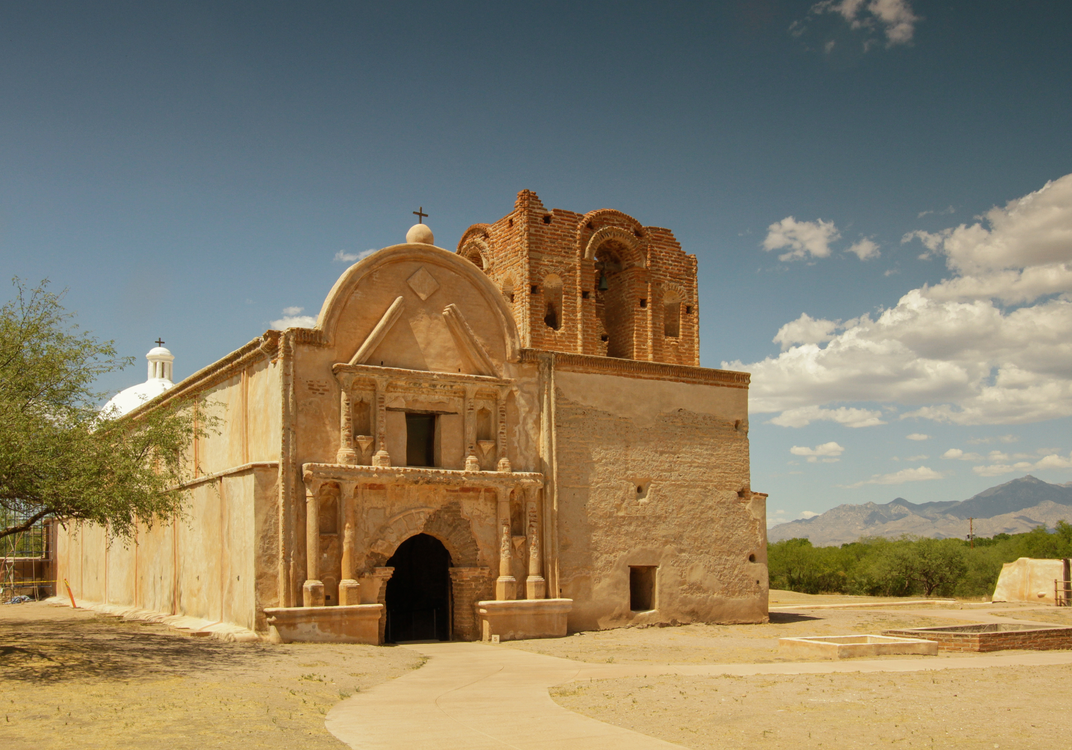
Tumacácori National Historical Park is among the United States’ oldest national parks—first listed as a national monument in 1908, it would take until 1990 before it was reclassified as a National Historic Park. Indeed, the time taken mirrors Tumacácori’s long and storied past, one that spans many centuries, cultures and conflicts. Prior to contact from Jesuit missionaries, the land was home to the Tohono, the Pima, the Yaqui, the Apache, and the Mexican people. In 1691, Father Francisco Kino, a Jesuit priest, visited and established Tumacácori as a mission, making it the oldest mission site in Arizona. A small church was built in the years after. In the early 1800s, the mission was taken over by Franciscans after the Jesuits were expelled and construction began on a larger church, though it was never completed.
While the area’s main attraction is the Franciscan-era church, Tumacácori has multiple historic buildings worth a visit, including a replica of a traditional O’odham dwelling, ruins of the mission convent and cemetery, as well as two remote mission sites that can only be visited on reserved tours from January to April. After watching an educational video at the park's visitor center, catch a cultural demonstration from Tohono O’odham basket weavers or sample tortillas cooked traditionally over a mesquite fire. Admire the church’s architecture, then take a jaunt through the park’s lush garden and orchard, or follow a trail along the Juan Bautista de Anza National Historic Trail and Santa Cruz River, a perfect spot for birdwatching.
5. Fort Apache Historic Park
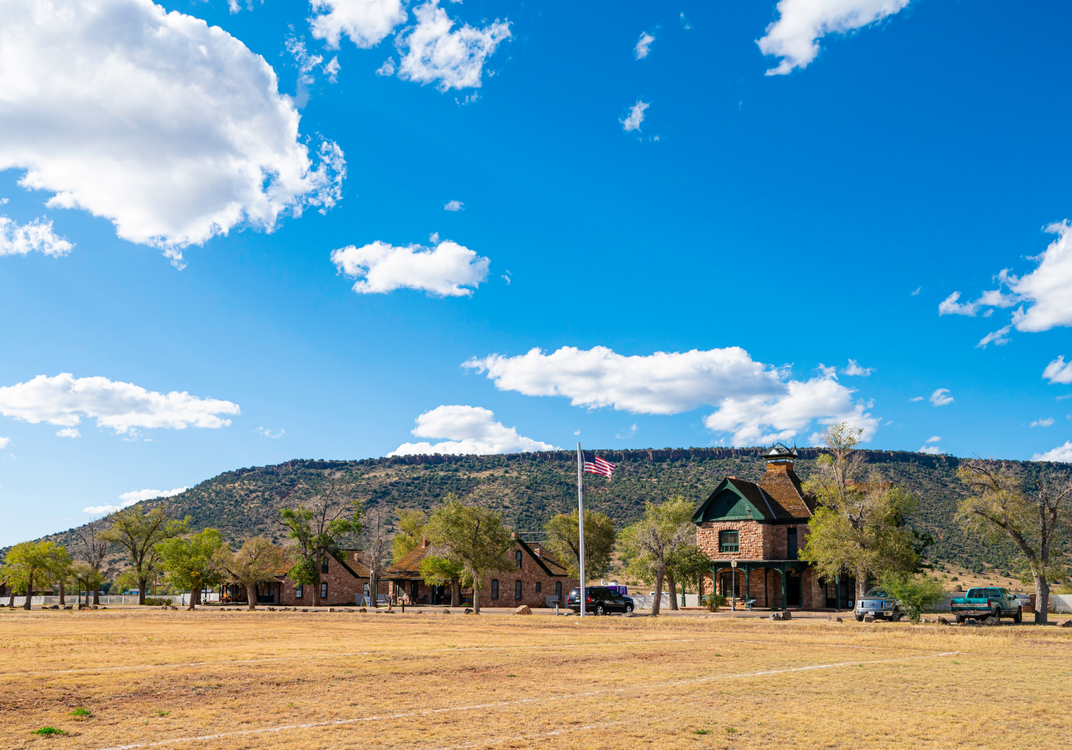
From 1861-1886, Fort Apache was a major outpost during the Apache Wars. Today, the area is a designated 288-acre historic park containing 27 historic buildings, recreational trails, and access to the nearby Kinishba Ruins National Historic Landmark. At General Crook’s Cabin, a log cabin built in 1871 and the park’s oldest structure, visitors can explore the fort’s history and impact on the Apache people through photo murals, maps, historical photographs and other exhibits. At the White Mountain Apache Cultural Center, learn more about Apache culture, both past and present, with exhibits, arts demonstrations, special events, and pieces for purchase by Apache craftspeople.
Go at your own pace on a self-guided tour; interpretive signs are posted throughout the district’s buildings and spaces, offering an immersive opportunity to imagine life on the military post. A quarter mile east of the main fort grounds is the Fort Apache Cemetery which can be accessed by road or walking trail. For a bit more of a challenge, try the 1.4-mile loop through East Fork Canyon that passes through a historic Apache Scout camp and small ancestral pueblo village. Entrance to the Kinishba Ruins National Historic Landmark is included with admission to the park.
7. Historic Town of Tombstone
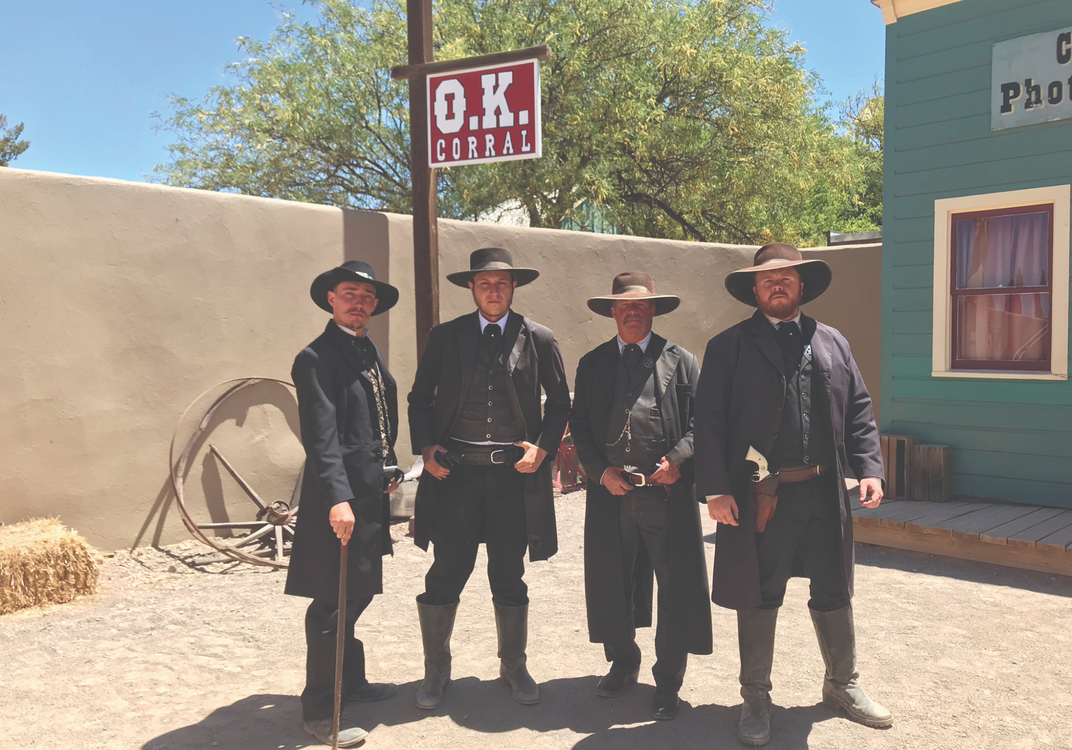
Located in the heart of southern Arizona’s Cochise County, the historic city of Tombstone retains much of its character from the 1800s. With daily re-creations, period garb wearing actors and numerous historically preserved landmarks, the city embraces its Old West history, putting it proudly on display. In many ways, Cochise County was the crossroads of competing cultures.
Set out along Allen Street where the town’s central downtown recalls its historic charm. Stop in for a quick history primer at the O.K. Coral to learn what caused the 30-second showdown with a reenacted gunfight at the Tombstone Theater. For a spooky take on “the town too tough to die”, visit The Bird Cage Theater, said to be haunted by the spirits of former brothel workers. While en route, plan a stop at the nearby Sierra Vista—known for its panoramic views and a fantastic spot to glimpse rare birds. Nearby in Sonoita-Elgin, about half an hour away, the area is also home to fantastic local vineyards.
For visitors wanting to really delve deeper into Arizona’s Old West history, Cochise County is an ideal destination. Start by booking a stay at the Tombstone Monument Ranch. In 1993, the American Western film Tombstone drew attention to the extraordinary history of Cochise County. Now, 2.5 miles away from the iconic town, it’s possible to stay at a historic dude ranch and experience the authentic cowboy lifestyle.
But Tombstone is only the beginning of the historic adventures one can experience in the area. At Slaughter Ranch Museum, now a Historic Monument, visitors can stop by a sheriff’s Old West ranch and get a sense of what it must have been like to be a 19th-century cattle baron.
7. Cochise Stronghold
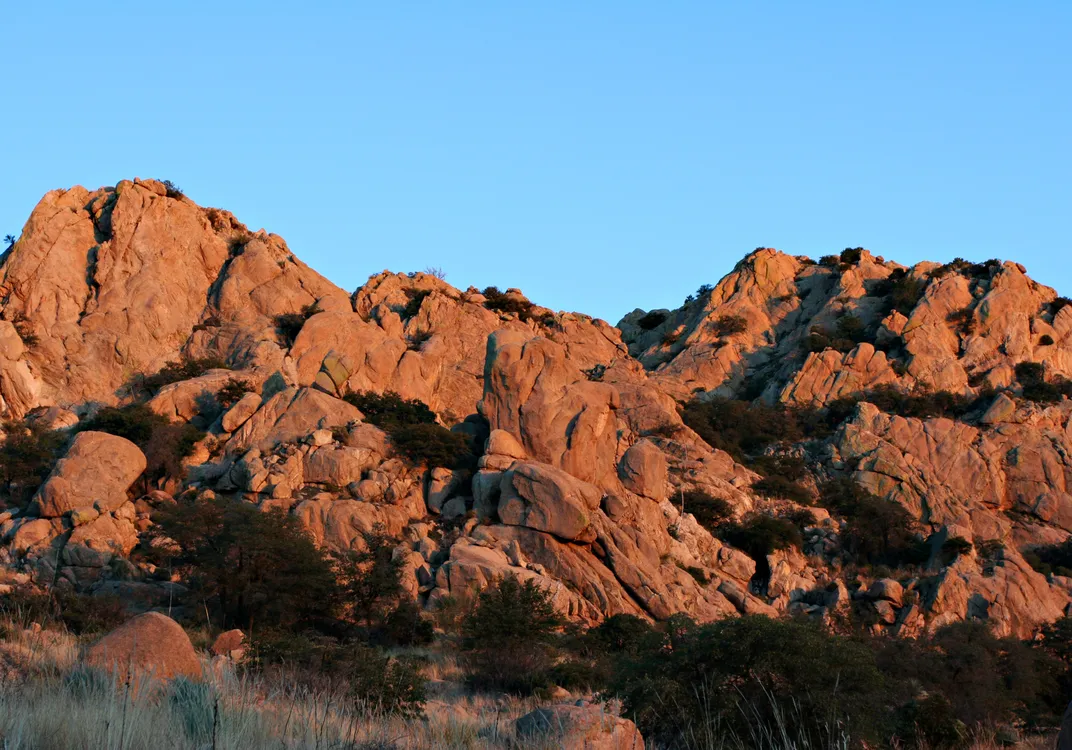
Named for the Apache leader, Cochise, this magnificent woodland campground sits within the very same canyon that was once the stronghold for his band of warriors. In 1861, Cochise was accused of kidnapping a rancher's son and arrested, which led to an ongoing conflict between his band and the United States government. Refusing to be wrongfully imprisoned, Cochise escaped. For the next decade, Cochise and his men intensified their raids on American settlements before the U.S. government eventually offered Cochise a large reservation in the southeastern corner of what was then Arizona Territory. All the while, the area Cochise primarily operated from, Cochise Stronghold, was never taken.
Upon entering the East Stronghold Canyon, visitors will pass rocks that served as lookouts for Apache warriors. The Interpretive trail offers a shorter 0.12-mile loop filled with information on the area, Cochise, and his descendants. For a more thorough exploration, the Cochise Indian Trail leads hikers from the East Cochise Stronghold Campground along a 5-mile hike into the West Stronghold down in the canyon itself.
8. Fort Bowie National Historic Site

During the mid 19th-century, Fort Bowie was at the heart of a turbulent conflict between Chiricahua Apache and the United States Army. The serene landscape that greets visitors today stands in stark contrast to the intense battles that took place as Apache leaders, like Cochise and Geronimo, sought to reclaim their homelands. The Apache Pass became an important route during westward expansion and a critical rest stop for the Butterfield Overland Mail stagecoaches running between Memphis, Tennessee and San Francisco, California. Tensions blossomed, eventually escalating into the Battle of Apache Pass in July 1862. Soon after, Fort Bowie was established to protect the area from ongoing raids. Later, it became the headquarters in the United States' fight against the Chiricahua Apaches (led by Cochise).
A 1.5-mile hike over gently sloping hills leads visitors to the fort ruins. Along the way, visitors can spot the remnants of the Butterfield Stage route, the fort’s cemetery, and the Apache Spring. The ruins of the famous fort are spread out across the valley floor and hint at a lively community living together around the 19th-century military base—remnants of the schoolhouse, general store and rowhouses where soldiers enlisted can still be viewed. For 360-degree views of the Dos Cabezas and Chiricahua mountains, opt for the more strenuous Overlook Ridge Trail. For an overnight stay, visit the Bonita Creek Campground at the nearby Chiricahua National Monument or make the city of Willcox basecamp for your exploration.


/https://tf-cmsv2-smithsonianmag-media.s3.amazonaws.com/filer_public/a7/3a/a73a1de5-8e81-4329-9a4a-8f2c5e1c4ad9/aot-tuzigoot_citadel_-_nps_photo-paul_santellan_1-v1.png)